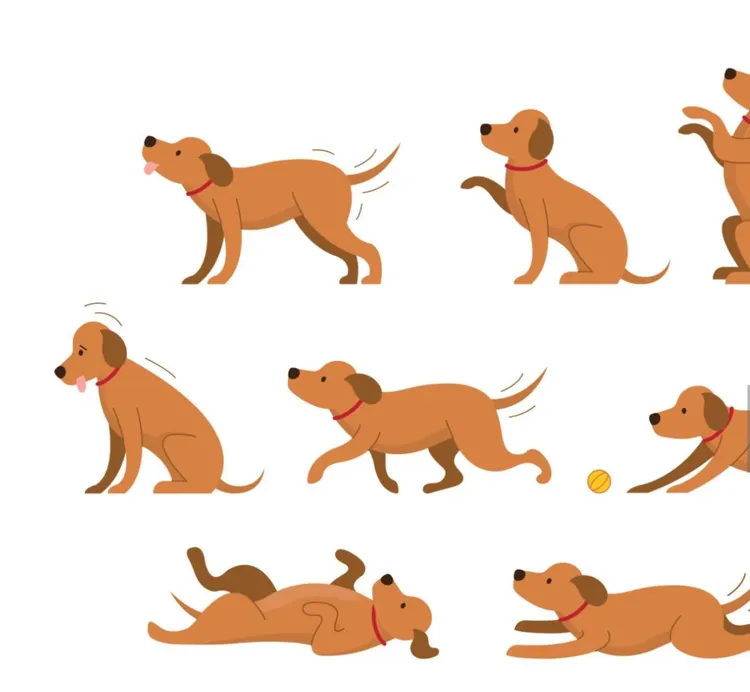Ever noticed the fur along your dog’s back standing on end, making them look like a spiky porcupine? While this might seem alarming at first, raised hackles (also called piloerection) are your dog’s way of communicating something important. These involuntary signals often reveal your dog’s emotional state, so understanding them can help you better respond to your pet’s needs. Let’s decode this furry message and explore how you can handle it with confidence and care.
What Are Dog Hackles?
Hackles refer to the strip of fur that runs along a dog’s back, typically from the neck to the base of the tail. When these hairs stand up, it’s called piloerection—an involuntary reflex triggered by the autonomic nervous system. This response can be due to various emotional states, ranging from excitement to fear or even aggression.
While hackles might suggest that a dog is angry or ready to attack, that’s not always the case. Raised hackles are a physiological reaction and don’t automatically signify aggression. Instead, they indicate that your dog is aroused by something, whether it’s a new environment, another animal, or an unfamiliar noise. Understanding what triggers this response can give you a better sense of your dog’s emotional well-being.
Common Triggers for Raised Hackles
There are several reasons why your dog’s hackles might rise. Let’s explore the most common emotional triggers:
1. Excitement or Playfulness
Believe it or not, raised hackles can sometimes be a sign that your dog is simply excited. During playful interactions with other dogs or people, your dog may experience a rush of adrenaline, causing their hackles to rise. This is especially common when dogs first meet each other, as their heightened state of arousal can lead to hackles standing up.
Body Language Clues:
- Tail wagging or held high.
- Relaxed, open mouth with tongue out.
- Ears forward or slightly tilted back.
In these cases, raised hackles aren’t anything to worry about, as they simply reflect excitement.
2. Fear or Anxiety
Hackles can also rise when a dog is scared or anxious. If your dog feels uncertain about a new situation—whether it’s meeting a stranger or hearing a loud noise—their hackles may stand up as part of their stress response.
Body Language Clues:
- Tail tucked between the legs.
- Ears flattened against the head.
- Eyes wide, with dilated pupils.
- Lip licking or yawning (calming signals).
Dogs that display these cues are likely feeling fearful, and understanding this helps you support them in a way that reduces anxiety.
3. Aggression or Defensive Posture
Raised hackles can sometimes be a sign that your dog is on the defensive. If a dog feels threatened by another animal or person, they may go into fight-or-flight mode. In these instances, their hackles rise as a warning signal to potential threats. However, this doesn’t necessarily mean your dog will become aggressive; it simply indicates heightened arousal.
Body Language Clues:
- Stiff, rigid body posture.
- Ears pinned back or pointed forward aggressively.
- Intense staring or growling.
- Mouth closed tightly, showing signs of tension.
It’s important to recognize these signs early and de-escalate the situation by creating distance or redirecting your dog’s attention.
4. Surprise or Curiosity
Unexpected stimuli, like a sudden noise, unfamiliar objects, or new people, can also cause raised hackles. This reaction often happens because the dog is trying to assess the situation. Hackles raised in this context usually indicate surprise or curiosity rather than fear or aggression.
Body Language Clues:
- Tail held high or wagging slowly.
- Ears perked up, focused on the stimulus.
- Eyes alert, watching intently.
In this case, allowing your dog to safely investigate the new situation can help reduce their uncertainty.

How to Interpret Hackles Alongside Other Body Language Cues
Hackles alone don’t give you the full picture. To truly understand what your dog is feeling, you need to observe other aspects of their body language.
Ears:
- Forward ears usually signal curiosity or attentiveness.
- Pinned-back ears indicate fear, anxiety, or submission.
Tail:
- A wagging tail doesn’t always mean happiness. A high, stiff wag can indicate arousal or tension, while a low, slow wag often reflects uncertainty.
- A tucked tail is a clear sign of fear or submission.
Eyes and Mouth:
- Dilated pupils can be a sign of fear, stress, or excitement.
- A closed or tense mouth, especially if accompanied by teeth showing, may indicate aggression or discomfort.
When observing your dog’s body language, look for a combination of cues. This will give you the clearest understanding of their emotional state.
Responding to Your Dog’s Hackles
Once you’ve identified the reason behind your dog’s raised hackles, you can take steps to respond appropriately.
1. Stay Calm
Your dog takes emotional cues from you. If you become anxious or stressed, it can amplify their emotions. Stay calm, use a reassuring voice, and avoid reacting aggressively.
2. Redirect Their Attention
If your dog is showing raised hackles due to excitement, fear, or uncertainty, try to redirect their focus. Use a favorite toy, treat, or command to shift their attention away from whatever is causing the arousal. This helps to break the cycle of anxiety or overstimulation.
3. Create Distance
If possible, remove your dog from the situation causing the raised hackles. This is particularly important if you suspect your dog is feeling threatened or anxious. Creating space helps lower your dog’s stress levels and reduces the chance of an escalation.

Eco-Friendly Solutions for Managing Stress and Behavior
When addressing behavioral issues or helping your dog manage stress, consider incorporating eco-friendly options into your routine.
1. Calming Pheromone Sprays or Diffusers
Eco-friendly calming sprays made from natural ingredients can help reduce your dog’s anxiety in stressful situations. These products mimic the pheromones dogs produce when they feel safe and secure, promoting a sense of calm.
2. Sustainable Training Tools
Positive reinforcement is a powerful method to manage your dog’s emotional responses. Choose training tools like toys made from recycled materials or sustainably sourced treats. These not only help reduce waste but also provide an ethical approach to dog training.
3. Routine Mental and Physical Exercise
Providing regular physical and mental stimulation can reduce the likelihood of stress-related behaviors, including raised hackles. Engage your dog with interactive toys, eco-friendly chewables, or long walks in nature to keep them relaxed and content.
Conclusion
Raised hackles in dogs are a fascinating and important aspect of their body language. Whether your dog is feeling excited, fearful, or uncertain, understanding what these signals mean can help you respond in a way that promotes their well-being. By staying calm, interpreting body language correctly, and using eco-friendly training methods, you can help manage your dog’s emotional responses effectively.
By taking a proactive and eco-conscious approach, you’re not only strengthening your bond with your dog but also contributing to a more sustainable and harmonious relationship with your environment.



